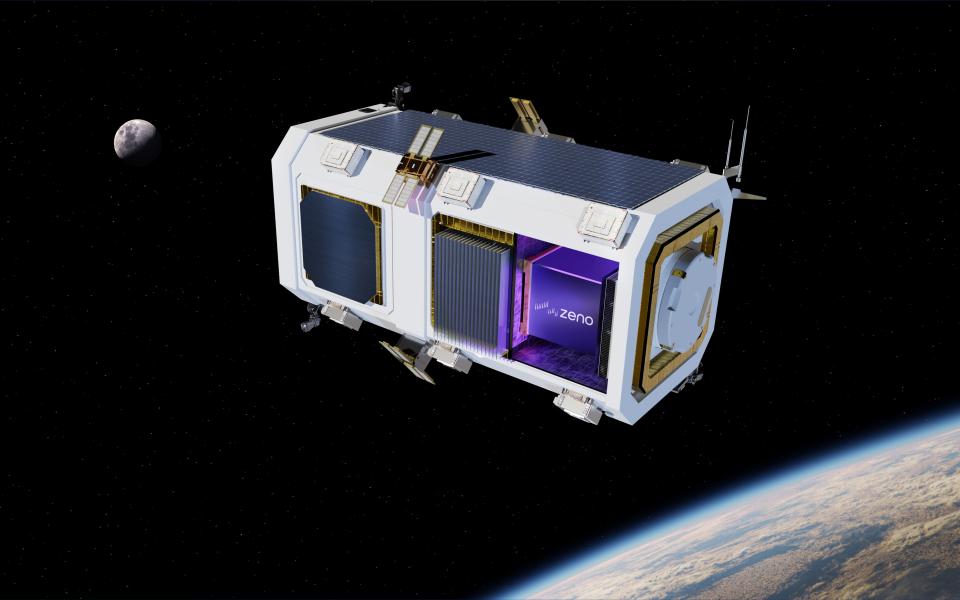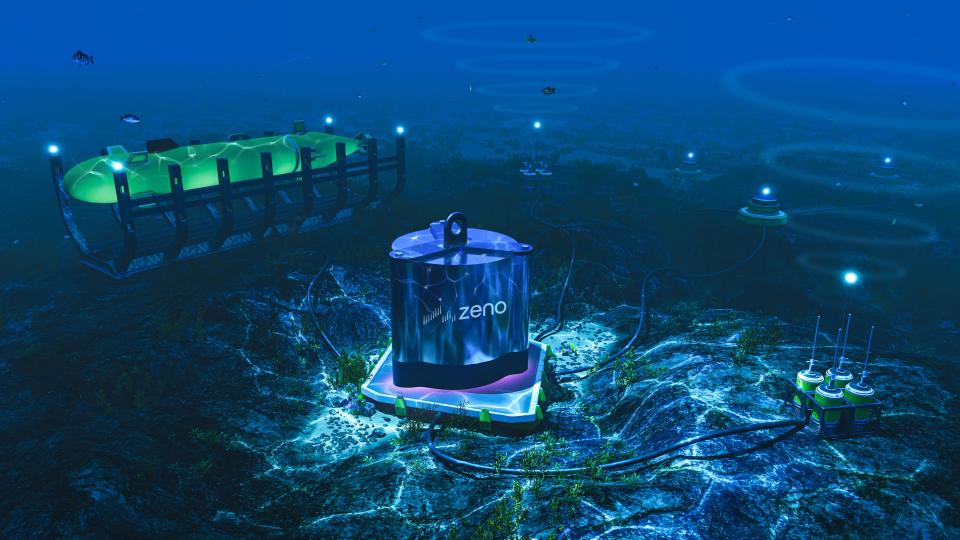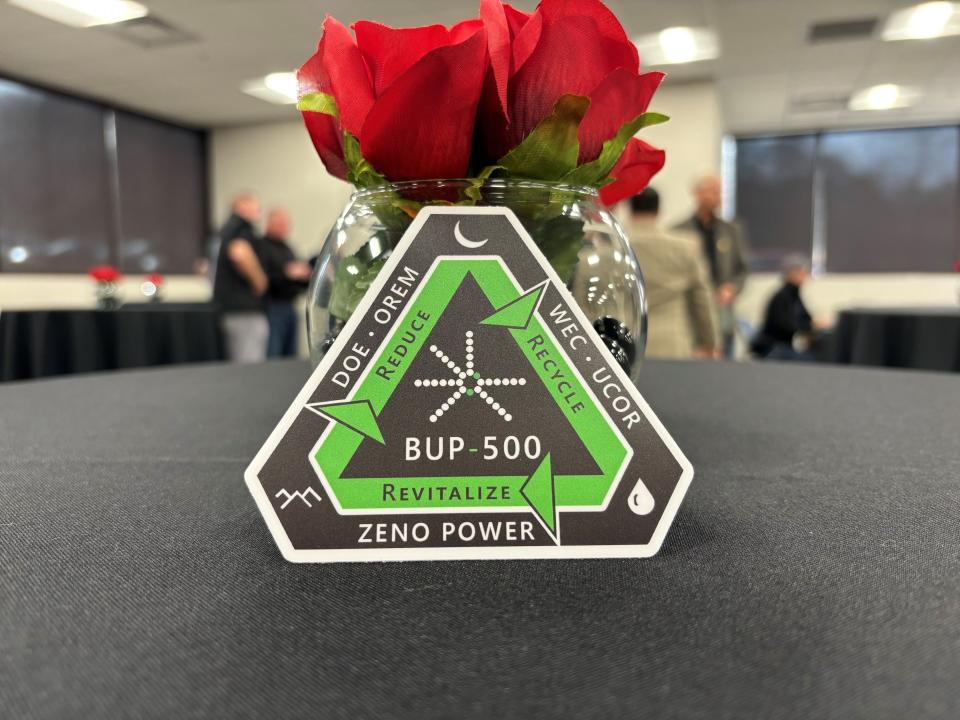Oak Ridge nuclear waste will be recycled to power space exploration and deep sea research
An unused Cold War-era generator has left Oak Ridge on a new mission: bring power to the most remote places on earth and the dark side of the moon.
Zeno Power joined forces with the Oak Ridge Office of Environmental Management and its cleanup contractor United Cleanup Oak Ridge (UCOR) to transfer a radioisotope generator called the BUP-500, the largest of its kind ever made, which had been sitting at Oak Ridge National Laboratory since the mid-1980s.
Zeno Power, a startup founded by three Vanderbilt students in 2018, plans to use the radioactive fuel from the generator to develop a new kind of power generator for customers like the Department of Defense and NASA. The partnership was announced Jan. 26 at UCOR headquarters in Oak Ridge.
Tyler Bernstein, co-founder and CEO of Zeno Power, said he hoped the partnership with the Department of Energy would set a precedent for how private companies can work with the U.S. government to turn waste into clean energy.
"I can only imagine how exciting it's going to be when this fuel that has now left the state will be deployed in the oceans, in space, enabling a next generation of scientific and national security missions," Bernstein said.

Zeno Power has innovative nuclear power design
Zeno Power develops radioisotope power systems, which produce electricity using heat from the decay of radioactive material. They are the size of a microwave and can generate power in cold and dark environments for decades. A favorite of NASA, they have powered its Apollo and Voyager missions, as well as several Mars rovers.
NASA uses plutonium-238, which allows for lightweight systems. The Department of Energy has jumpstarted its production of plutonium-238 at ORNL, which shipped a significant amount of the rare isotope to Los Alamos National Laboratory last August to be turned into fuel for NASA space exploration, including a trip to one of Saturn's moons.
Zeno Power is developing a new system using the strontium-90 isotope, which has historically been used in more than 1,200 systems to power sensors on the ocean floor, arctic buoys and other remote devices.
While strontium-90 is more abundant than plutonium-238, it requires concrete and lead to contain its radioactivity, which historically has made systems incredibly heavy and difficult to handle.

Zeno Power's innovation is a lightweight strontium-90 system that it plans to bring to market by 2026 as the first commercial radioisotope power system. Long accessible only to the government, the systems are in greater demand from companies that work in telecommunications, deep-sea mining, offshore wind power and space exploration.
In 2023, Zeno Power announced more than $40 million in contracts from the Department of Defense, including $30 million to develop a satellite for the U.S. Air Force and $7.5 million to power naval research on the ocean floor.
Its strontium-90 heat source — the building block of its systems — was first demonstrated last October at Pacific Northwest National Laboratory.
Bernstein said Zeno Power, with offices in Washington, D.C., and Seattle, plans to source much of its fuel from legacy nuclear sites like Oak Ridge. The company's power systems have a closed design that does not emit radioactive waste into their environments and could allow spent fuel to be recycled.
Oak Ridge cleanup touted as rare government efficiency
Bernstein and his co-founders Jonathan Segal and Jake Matthews first saw the unused BUP-500 generator on a tour of ORNL when the company was in its infancy at Vanderbilt. The tour opened their eyes to opportunities for partnership in Oak Ridge, where the Department of Energy prides itself on disposing nuclear waste or reusing it in creative ways.
In the fast-paced development of new nuclear power in Oak Ridge after World War II, some technologies proved useless and were put into storage.

For instance, the Department of Energy once created a large amount of uranium-233, an isotope that held promise as an alternate nuclear fuel, before it proved too volatile to use and was stored away. Since 2019, the department has partnered with Isotek and TerraPower to extract thorium from the uranium-233 and use it for next-generation cancer treatments rather than throwing it away.
The transfer of the BUP-500 generator to Zeno Power is a similar success story. It is not the first Oak Ridge partnership for the company, which has worked both formally and informally with ORNL for years. The lab previously validated the company's design in an independent review.
Jay Mullis, manager of the Oak Ridge Office of Environmental Management, called the generator transfer a "win-win scenario."
The generator is so radioactive that it would have had to stay at ORNL for 25 to 30 years before it could be disposed of at the Nevada National Security Site, according to an unclassified Department of Energy document.
"The equipment represented one of the largest single radioactive sources that was a legacy on the site, and so being able to take advantage of this transforms the site and gives us significant risk reduction," Mullis said. "You would not believe how many people it took to get this approved and actually transported out of state."

Included in the many partners was a federal truck driver named Gabe Melo, who drove the generator from Oak Ridge to a subcontractor facility in Pennsylvania.
Though Melo was not at the ceremony, he was presented a commemorative coin by Mike Smith, a representative of the Department of Defense. Smith said Melo was the only driver in the nation certified and available to make the sensitive trip.
"We see, hear and understand how complicated and nuanced this activity was and we want to acknowledge that this was an incredibly efficient activity of the U.S. government and gives a great name to government workers," Smith said.
The Oak Ridge Office of Environmental Management is part of the Department of Energy's cleanup program for World War II and Cold War nuclear sites, the largest of its kind in the world. Mullis, who manages the office, said Oak Ridge cleanup is far ahead of other legacy sites like the Hanford Site in Washington.
In addition to repurposing nuclear waste, the office plans to finish cleaning soil at the former K-25 site and tear down a Manhattan Project building at Y-12 National Security Complex for the first time this year. It also is preparing to demolish a third nuclear reactor at ORNL.
Daniel Dassow is a growth and development reporter focused on technology and energy. Phone 423-637-0878. Email daniel.dassow@knoxnews.com.
Support strong local journalism by subscribing at knoxnews.com/subscribe.
This article originally appeared on Knoxville News Sentinel: Zeno Power to recycle Oak Ridge nuclear waste in space, on sea floor

